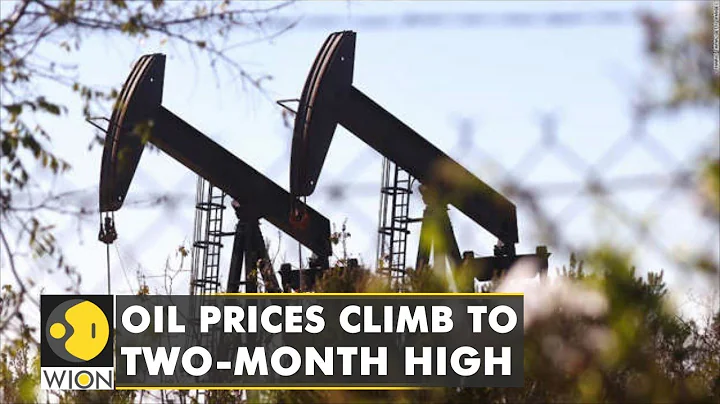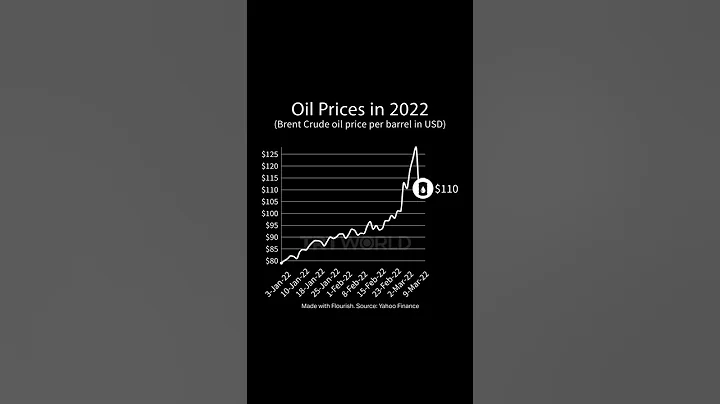is faster than flipping through a book! Last month, international oil prices hit record highs, but this month they continue to drop. In just over a month, oil prices fell by nearly 30%.
As a leader in commodities, the overnight plunge in crude oil prices has attracted global market attention! As concerns about weakening global demand and oversupply persisted, WTI crude oil futures closed sharply down 7.07% on Tuesday night at $55.69 per barrel, recording the largest single-day decline in more than three years and the 12th consecutive day of decline, the longest period of decline. Record losing streak.

Since October, U.S. crude oil has dropped from a high of $76.9 to $54.75, a drop of nearly 30%.
In trading last night, China crude oil futures SC1812, 1901, 1902 and other contracts fell by the limit across the board. At the opening of trading this morning, several major crude oil contracts were still at their daily limits, and fuel futures also fell by more than 5%. As of the close, crude oil futures closed at the limit for the first time since their listing, fuel and asphalt once fell by the limit, methanol and PTA fell by nearly 3%, black prices recovered slightly, and thermal coal rose by more than 2%.

The plunge in crude oil futures was also transmitted to the A-share market. As of the close, the oil sector ranked first among the industry sectors in the two cities. CNPC, COOEC, and COSL fell more than 4%, Sinopec fell more than 3%, and PetroChina fell nearly 3%. The drop in oil prices directly benefits the transportation industry, especially the air transportation sector. China Airlines rose 4.08%, China Southern Airlines rose more than 2%, and China Eastern Airlines, Air China, Juneyao Airlines, etc. rose more than 1%.
What triggered the plunge in crude oil futures? Stimulated by high oil prices, the three major crude oil-producing countries are desperately increasing their output this year. So, with oil prices falling to around $55, what will happen in the future? Crude oil futures fell across the board, and chemical products plummeted
On Tuesday, OPEC released the November "Oil Market Monthly Report", raising crude oil supply expectations and lowering demand expectations, further intensifying market concerns about oversupply, triggering a plunge in the crude oil market .
WTI crude oil futures closed down 7%, recording the largest single-day decline in more than three years. They fell for 12 consecutive days, setting a record for the longest losing streak. They fell as low as $54.75, a new low for the year, and are currently running around $55.
It is worth noting that since October, U.S. crude oil has dropped from a maximum of $76.9 to $54.75, a drop of nearly 30%. Generally speaking, when asset prices fall by more than 20%, it becomes a reference indicator for a bear market.
In trading last night, China crude oil futures SC1812, 1901, 1902 and other contracts fell by the limit across the board. At the opening of trading this morning, several major crude oil contracts were still at their daily limits, and fuel futures also fell by more than 5%, with the 1906 contract hitting their daily limits.
The plunge in crude oil also triggered a sharp fall in most chemical products. Among them, asphalt futures, known as "small crude oil" with the highest correlation, fell by more than 5%, and PTA, methanol, etc. also fell by more than 2%.
The OPEC report shows that in terms of supply, the daily crude oil production of the 15 OPEC member states in October 2018 was 32.90 million barrels, an increase of 127,000 barrels compared with the daily crude oil production in September 2018;
The daily average non-OPEC oil supply in 2019 is expected to be 62.09 million barrels. barrels, an average daily increase of 2.23 million barrels from 2018, an increase of 120,000 barrels from the previous report.
In terms of demand, the average daily global oil demand in 2018 is expected to be 98.79 million barrels, which is 40,000 barrels lower than the previous forecast. The average daily global oil demand in 2019 is expected to be 100.08 million barrels, an increase of 1.29 million barrels from the global average daily oil demand in 2018, and a decrease of 70,000 barrels from last month's forecast. This is the fourth consecutive month that OPEC has lowered the growth rate of global crude oil demand.
Overall, the oversupply situation in the crude oil market will intensify in 2019. In particular, the production growth of non-OPEC countries next year will exceed demand growth, and the oversupply situation will further worsen.
The oil sector has plummeted, and airline stocks have benefited.
National Financial Strategy Li Lifeng and others believe that historically, crude oil has fallen sharply, which is positively correlated with global equity market fluctuations as a whole, and the resource sector is particularly under pressure.
Fluctuations in oil prices affect many industries, and the impact of the plunge has also been transmitted to the A-share market.
As of the close, the oil sector ranked first among the industry sectors in the two cities. In terms of individual stocks, Tongyuan Petroleum fell more than 7%, CNPC, Offshore Oil Engineering, and China Oilfield Services fell more than 4%, Sinopec fell more than 3%, and PetroChina fell nearly 3%.

The drop in oil prices has directly benefited the transportation industry, especially the air transportation sector. As of the close, Shanxi Luqiao rose by the limit, Ningbo Shipping rose by nearly 6%, China Airlines rose by 4.08%, China Southern Airlines rose by more than 2%, China Eastern Airlines, Air China, Juneyao Airlines and others rose more than 1%.

analyzes that the performance of many domestic civil aviation companies in the third quarter of this year fell year-on-year, mainly due to the year-on-year increase in oil prices and exchange losses. If oil prices remain low in the future, these airlines will benefit from it.
Everbright Securities believes that for the aviation industry, flight supply-side reforms have led to a slowdown in time growth, but demand remains strong, and civil aviation passenger turnover and average passenger load factors remain high. On the other hand, rising oil prices and depreciating exchange rates have seriously eroded airline profits. In the first three quarters, non-net profits of listed companies fell by 24.6% year-on-year. Looking into the future, the marginal negative impact of oil prices and exchange rate fluctuations on airline profits will gradually weaken. Under the premise of stable demand, airline performance has great room for improvement. It is recommended to pay attention to China Eastern Airlines and Juneyao Airlines, which have the best competitive landscape.
Three major factors caused crude oil to plummet
Wang Haozheng, an energy and chemical researcher at Yangtze River Futures, believes that this decline is intuitively caused by the negative OPEC monthly report, but essentially it is due to the recent outbreak of market concerns about oversupply.
First of all, Iran’s supply has declined less than expected. Since the United States withdrew from the Iran nuclear deal, Iran's supply decline has been a problem for half a year, and Brent oil also hit a high of $86 in early October. However, since the sanctions came into effect on November 4, on the one hand, the United States has reduced the sanctions exemptions for eight countries. On the other hand, shipping data exported by Iran also shows that Iran’s actual supply decline may be far less than market expectations. Iran's export level in October was about 1.5 million barrels per day, a decrease of about 900,000 barrels per day from May, which was lower than the market consensus of more than 1 million barrels per day.
Secondly, other OPEC+ countries represented by Saudi Arabia, Russia, Libya, Kuwait have significantly increased their production. OPEC's overall output continues to rise, rising to 32.9 million barrels per day in October. After the United States exempted eight countries, the decline in Iran's supply is expected to slow down, and other countries have been given a longer time window to increase production. The risk of Iran's impact on total supply has been greatly reduced.
Finally, pessimistic expectations for the long-term supply and demand structure. Due to the decline in macroeconomic sentiment and the upward revision of historical U.S. production, institutions are increasingly concerned about oversupply in the fourth quarter of this year and in 2019. OPEC's demand forecast for 2019 is 31.54 million barrels per day, which is lower than current output levels. The OPEC meeting last weekend did not provide a clear signal to reduce production. After yesterday's OPEC monthly report once again lowered its expectations for OPEC oil demand, market panic broke out and caused oil prices to plummet.
In addition, there is news that Saudi Arabia may withdraw from OPEC. According to the Wall Street Journal, citing people familiar with the matter, Saudi Arabia may consider disbanding OPEC in the future, partly due to pressure from the United States and external investors.
Under high oil prices, U.S. shale oil production has grown at a record high
It is worth noting that since the beginning of this year, international oil prices have been running above $60 for most of the time. In early October, U.S. crude oil hit a high price of $76.9. Stimulated by high oil prices, the three major crude oil-producing countries are desperately increasing their output this year.
According to reports, Saudi Arabia will no longer comply with production reduction quotas for the first time since reaching an agreement to reduce production in 2016. In October, Saudi Arabia increased its output above the initially set production cut levels. According to the agreement at the time, Saudi Arabia agreed to reduce production by 486,000 barrels per day, and production must be maintained below 10.544 million barrels per day. According to the latest OPEC monthly report, Saudi Arabia’s output in October was 10.63 million barrels per day, and in September it was 10.502 million barrels per day.
Russian crude oil production has surpassed that of the former Soviet Union and reached a historical peak.
What worries the market the most is the United States. As you can see from the chart below, the red line is the United States, where production has grown the fastest in recent years. In particular, in August this year, U.S. crude oil production successfully surpassed Russia to become the world's largest crude oil producer.






















